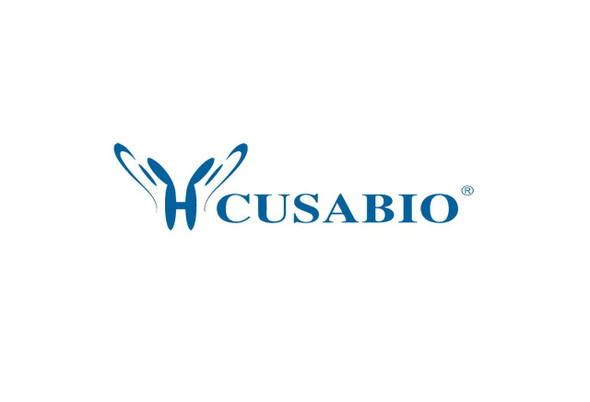Cusabio Human Recombinants
Recombinant Human Dual specificity protein kinase CLK2 (CLK2), partial | CSB-EP005558HU1a6
- SKU:
- CSB-EP005558HU1a6
- Availability:
- 13 - 23 Working Days
Description
Recombinant Human Dual specificity protein kinase CLK2 (CLK2), partial | CSB-EP005558HU1a6 | Cusabio
Alternative Name(s): CDC-like kinase 2
Gene Names: CLK2
Research Areas: Cell Biology
Organism: Homo sapiens (Human)
AA Sequence: RRAKSVEDDAEGHLIYHVGDWLQERYEIVSTLGEGTFGRVVQCVDHRRGGARVALKIIKNVEKYKEAARLEINVLEKINEKDPDNKNLCVQMFDWFDYHGHMCISFELLGLSTFDFLKDNNYLPYPIHQVRHMAFQLCQAVKFLHDNKLTHTDLKPENILFVNSDYELTYNLEKKRDERSVKSTAVRVVDFGSATFDHEHHSTIVSTRHYRAPEVILELGWSQPCDVWSIGCIIFEYYVGFTLFQTHDNREHLAMMERILGPIPSRMIRKTRKQKYFYRGRLDWDENTSAGRYVRENCKPLRRYLTSEAEEHHQLFDLIESMLEYEPAKRLTLGEALQHPFFARLRAEPPNKLWDSSRDISR
Source: E.coli
Tag Info: N-terminal 6xHis-B2M-tagged
Expression Region: 138-499aa
Sequence Info: Partial
MW: 56.7 kDa
Purity: Greater than 85% as determined by SDS-PAGE.
Relevance: Dual specificity kinase acting on both serine/threonine and tyrosine-containing substrates. Phosphorylates serine- and arginine-rich (SR) proteins of the spliceosomal complex. May be a constituent of a network of regulatory mechanisms that enable SR proteins to control RNA splicing and can cause redistribution of SR proteins from speckles to a diffuse nucleoplasmic distribution. Acts as a suppressor of hepatic gluconeogenesis and glucose output by repressing PPARGC1A transcriptional activity on gluconeogenic genes via its phosphorylation. Phosphorylates PPP2R5B thereby stimulating the assembly of PP2A phosphatase with the PPP2R5B-AKT1 complex leading to dephosphorylation of AKT1. Phosphorylates: PTPN1, SRSF1 and SRSF3. Regulates the alternative splicing of tissue factor (F3) pre-mRNA in endothelial cells.
Reference: "The Clk2 and Clk3 dual-specificity protein kinases regulate the intranuclear distribution of SR proteins and influence pre-mRNA splicing." Duncan P.I., Stojdl D.F., Marius R.M., Scheit K.H., Bell J.C. Exp. Cell Res. 241:300-308(1998)
Storage: The shelf life is related to many factors, storage state, buffer ingredients, storage temperature and the stability of the protein itself. Generally, the shelf life of liquid form is 6 months at -20?/-80?. The shelf life of lyophilized form is 12 months at -20?/-80?.
Notes: Repeated freezing and thawing is not recommended. Store working aliquots at 4? for up to one week.
Function: Dual specificity kinase acting on both serine/threonine and tyrosine-containing substrates. Phosphorylates serine- and arginine-rich (SR) proteins of the spliceosomal complex. May be a constituent of a network of regulatory mechanisms that enable SR proteins to control RNA splicing and can cause redistribution of SR proteins from speckles to a diffuse nucleoplasmic distribution. Acts as a suppressor of hepatic gluconeogenesis and glucose output by repressing PPARGC1A transcriptional activity on gluconeogenic genes via its phosphorylation. Phosphorylates PPP2R5B thereby stimulating the assembly of PP2A phosphatase with the PPP2R5B-AKT1 complex leading to dephosphorylation of AKT1. Phosphorylates
Involvement in disease:
Subcellular Location: Isoform 1: Nucleus, Nucleus speckle, Note=Inhibition of phosphorylation at Ser-142 results in accumulation in the nuclear speckle, SUBCELLULAR LOCATION: Isoform 2: Nucleus speckle
Protein Families: Protein kinase superfamily, CMGC Ser/Thr protein kinase family, Lammer subfamily
Tissue Specificity: Endothelial cells.
Paythway:
Form: Liquid or Lyophilized powder
Buffer: If the delivery form is liquid, the default storage buffer is Tris/PBS-based buffer, 5%-50% glycerol. If the delivery form is lyophilized powder, the buffer before lyophilization is Tris/PBS-based buffer, 6% Trehalose, pH 8.0.
Reconstitution: We recommend that this vial be briefly centrifuged prior to opening to bring the contents to the bottom. Please reconstitute protein in deionized sterile water to a concentration of 0.1-1.0 mg/mL.We recommend to add 5-50% of glycerol (final concentration) and aliquot for long-term storage at -20?/-80?. Our default final concentration of glycerol is 50%. Customers could use it as reference.
Uniprot ID: P49760
HGNC Database Link: HGNC
UniGene Database Link: UniGene
KEGG Database Link: KEGG
STRING Database Link: STRING
OMIM Database Link: OMIM









